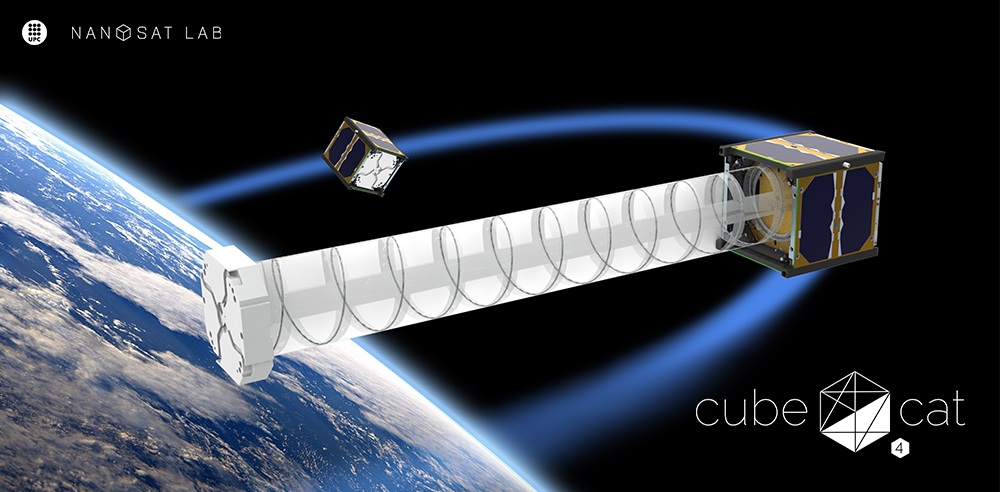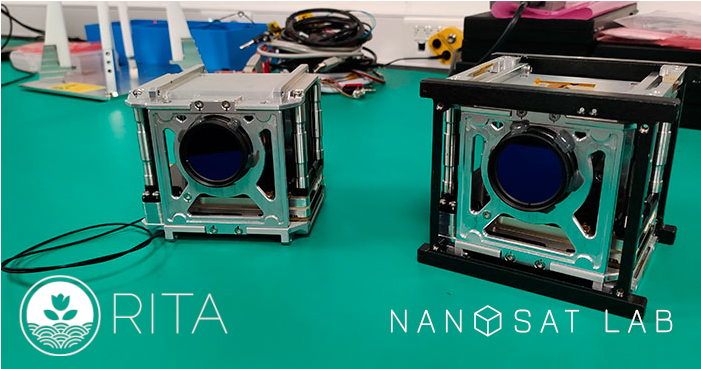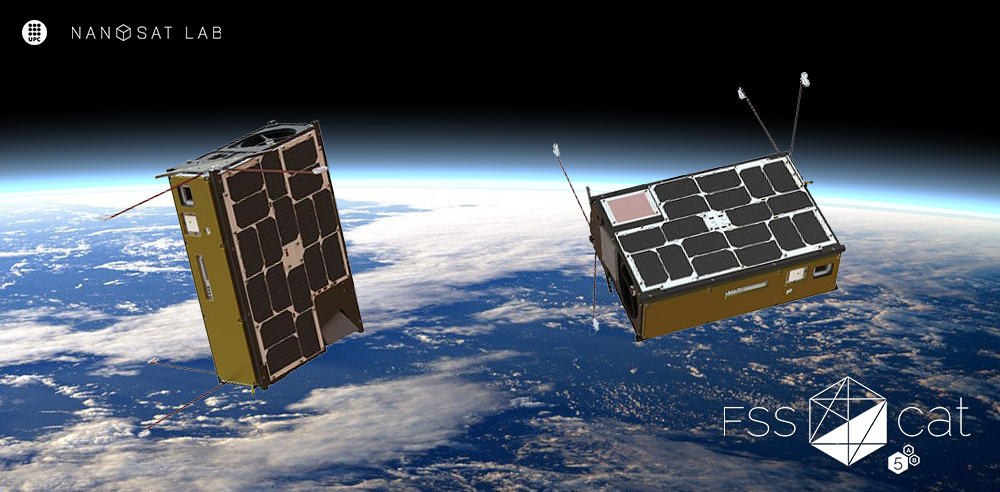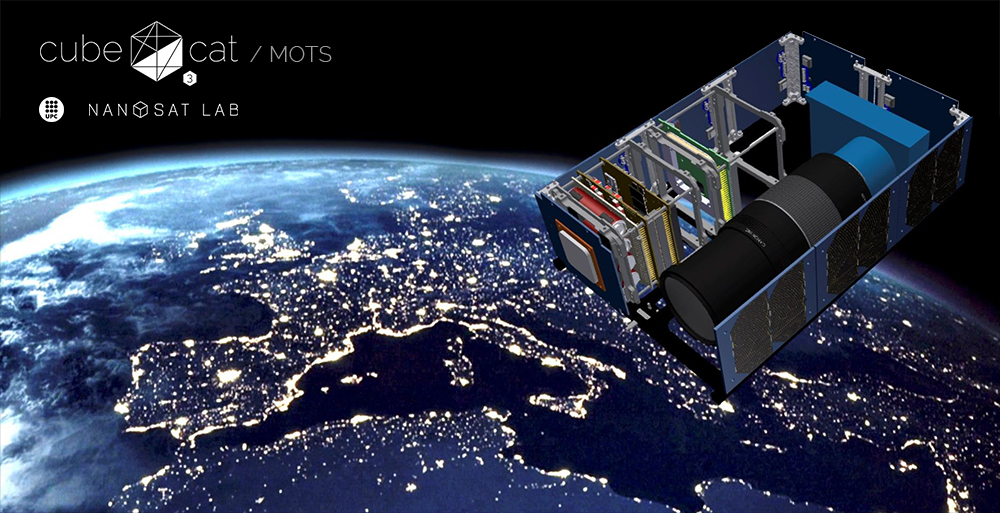· Luis Contreras Benito · Mission · 4 min read
³Cat-8
The eighth satellite in the lab's CubeCat series
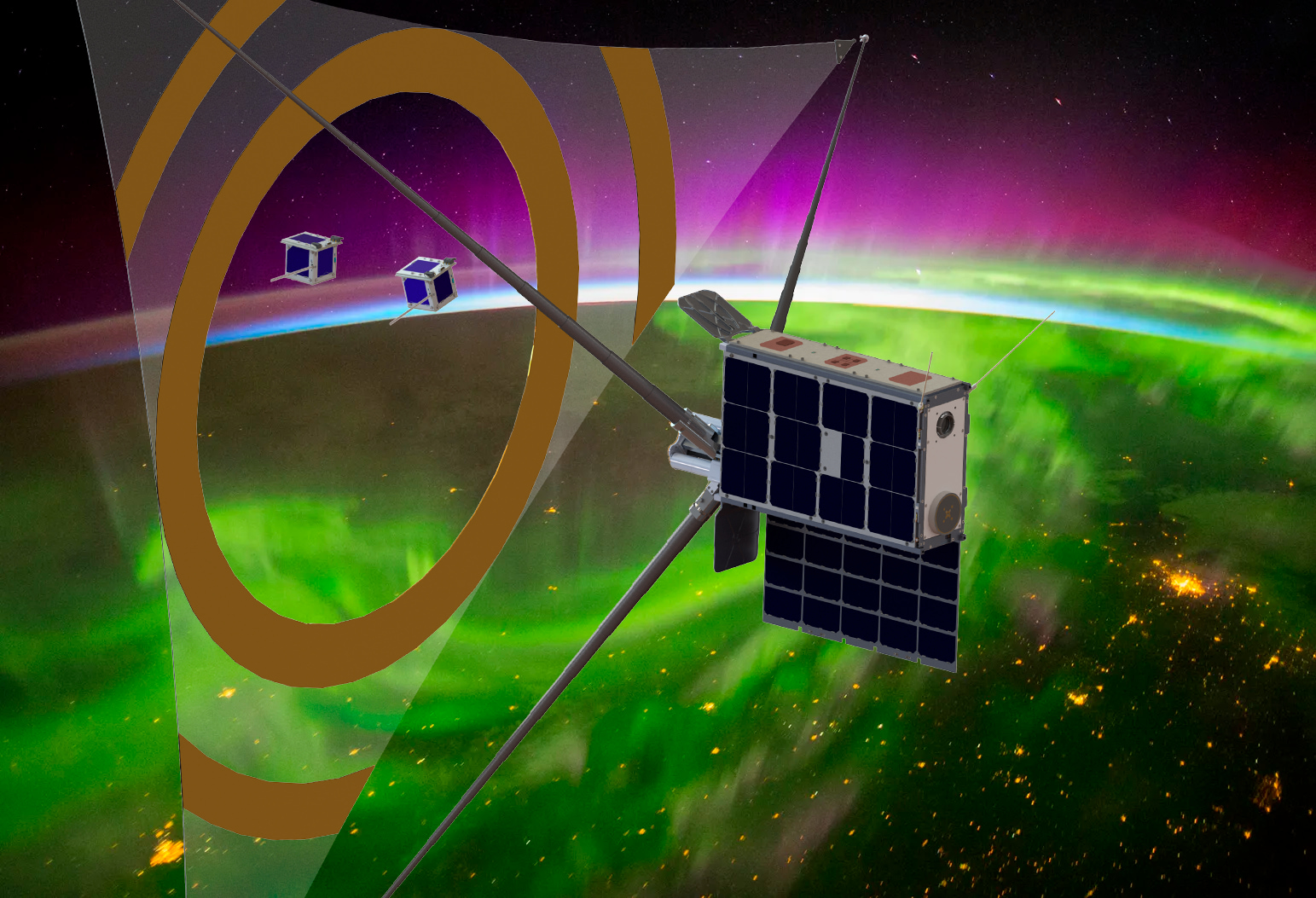
³Cat-8 is a 6-Unit CubeSat developed entirely by the UPC NanoSat Lab that will host size-, power-, and mass-optimized systems and sensors, to demonstrate their feasibility, with a strong focus on ionospheric remote sensing. These instruments will make use of polarimetric GNSS-RO satellite signals, disturbed by ionospheric scintillation, for the retrieval of the S4 and σϕ scintillation parameters. Additionally, coincident polarimetric multi-spectral images of the Earth’s aurora, will measure its polarized emission, which will provide valuable information for ionospheric models improvement, aiding in the design of more robust future satellite communication and navigation systems.
Mission Objectives:
³Cat-8 is a scientific mission based on a 6-unit (6U) CubeSat, devoted to ionospheric scintillation monitoring as its primary goal, and Radio-Frequency Interference (RFI) monitoring at L- and K- bands as secondary goals. The mission objectives are three-fold:
- Educational: The development of this project is mostly carried out by graduate and undergraduate students, who have designed, implemented, and validated most of the satellite’s subsystems. In addition, the whole mission analysis is also completely performed by students, as well as the conceptualization and execution of the test campaigns with industry-rated equipment.
- Technology demonstration: The 3 Cat-8 spacecraft is host of several novel systems onboard:
- Deployable Fresnel Zone Plate Antenna (FZPA): Occupying two CubeSat units, it uses a two-stage deployment system composed of melt-lines that release a spring-loaded mechanism, and motor-driven stages. The FZPA has two Right-Hand Circular Polarization (RHCP) beams in the fore and back directions, for ⃗ and setting (−V) ⃗ GNSS-ROs. Other potential uses of this antenna also rising (+V) include inter-satellite link communications and other remote sensing applications.
- CubeSat PocketQube Integrated Deployer (CuPID): It will deploy Po Cat-1 and PoCat-2 for RFI monitoring at L- and K-bands.
- S- and X-band Communications Subsystem (S/X-COMMS): A modular S- and X-band communications board, fully developed in-house, will be used for high-speed scientific data downlink, as well as for payload re-programming and configuration.
- S-, L- and X-band Down-Looking Antenna (SiLeX): A multi-frequency stacked-patch nadir-looking antenna array that will be used for GNSS-R and data down- link purposes. The base is a 3x1 patch array centered at 1.575 GHz, with stacked S-band patch and a 2x2 X-band patch antennas.
- Test-bed for evolved Federated Satellite Systems (FSSs) techniques: Following on the developments of the 3 Cat-5/FSSCat mission, 3 Cat-8 will form an FSS network with the two deployed Po Cats and the UPC Ground Station.
- Scientific: The main scientific objective of the mission is to monitor ionospheric scintillation through the coincident execution of different experiments:
- GNSS Reflectometry and Radio Occultations experiment (GNSS-R/RO): A dual-receiver subsystem performs the GNSS-R and GNSS-RO experiments, and provided the Attitude Determination and Control Subsystem (ADCS) with positioning and timing data. The GNSS board can be configured by switching the reception in the fore (dual polarization), back (RHCP) and nadir (Left-Hand Circular Polarization (LHCP)) orientations, in conjunction with the zenith antenna (RHCP). The primary receiver is used for the experiments, but it can also act as the backup positioning receiver. The secondary receiver is permanently connected to the zenith antenna and the ADCS. The fore and aft-looking antennas will be used for GNSS-RO with a sampling rate of 20 Hz, whilst the down-looking patch array will perform GNSS-R which, over specular surfaces, also provides information about ionospheric scintillation. The processing of the data will be used to develop better ionospheric scintillation models for improved radio-wave propagation corrections. The GNSS-R data will be also used to retrieve climate variables such as ice thickness and extent.
- 3 Cat-Gea Multi-spectral Polarimetric Aurora Emission experiment: Composed of IEEC’s C3SatP multi-purpose system and the System for Upper-atmosphere Spectrometry of Ionospheric auroral Emissions (SUSIE) payload, it will acquire images of the auroral emissions over the poles, at 8 different bands in the visible spectrum. The use of a rotating linear polarizing filter will allow to retrieve the first three Stokes parameters (I, Q, and U). The imager will be controlled by the C3SatP, which will also be in charge to store them, and to perform the scientific data downlink.

